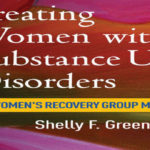The Impaired Nurse
Abstract
If a regular person has an addiction problem, they go into treatment, follow up with Alcoholics Anonymous, and hopefully return to the same employment. A nurse, however, risks losing her license, her employment, and her peers. Nurses are 100% dedicated to their patients. What happens when they need help? The American Nursing Association (ANA) estimates 10% of nurses have impaired performance due to substance abuse (2011). The nurse faces many unique concerns: Who can they trust if they think they are addicted? What happens to their nursing license if they are diagnosed with addiction? How soon can they return to work? Can the employer ask them to leave, or do they have to accept treatment? Legally is their only option loss of license or diversion?
Keywords: Impaired Nurse, Diversion, Addiction, Lobby government, Legal, Ethical.
The Impaired Nurse
The impaired nurse has been portrayed numerous times on television, in movies and by the press. The reality is that the impaired nurse has become a frequent occurrence in the real life health-care community. As frequency increases, the debate on how the nursing profession should handle the situation becomes more controversial. As well the Board of Registered Nurses (BRN) demands the Diversion Program, however, it is expensive, a nurse needs a lawyer to protect her license, and the nurse is forced to take time off work. Legislators need to find a way to protect the public at the same time by using Evidence Based Practice (EBP) to help the nurse. The Diversion Program in California is a sub-division of the BRN of California. There a conflict of interest as the BRN insists that if a nurse is to keep her license, she must pay and go to diversion. The discussion is of interest because the nurse who is diverting controlled medications from her place of work is being treated in a similar way to the nurse who has the disease of alcoholism or addiction.
History
The definition of addiction is the need for habit forming substances, leading to tolerance and eventually creating withdrawal symptoms if the substance is stopped (Anton, 2010).
Alcoholics Anonymous (AA) in the 1930’s was instrumental in changing the definition of Alcoholism and Addiction from a mental illness to a disease. AA went to employers to promote treatment for employees. The American Medical Association (AMA) declared formally in 1956 that Alcoholism and Addiction was a disease. In 1972, the National Institute on Alcohol Abuse and Alcoholism (NIAAA) gave funding to provide treatment for employees. In the 1980’s 80% of all federal employees, and 56% in private companies had access to treatment for impaired employees (Opinion Research Corporation, 1979).
Ethical and Legal
Nurses have always been the first line of care for patients. The nurse needs to be trustworthy, ethical, and moral. The nurse is seen by many to be above alcohol abuse and addiction issues. The public will forgive time off work for a back injury, knee surgery, or even a mental breakdown. The public may generally see addiction as a brain disease but if a nurse is diagnosed, it becomes more of a moral failing or lack of self-control.
“Impaired Nursing Practice: Ethical, Legal, and Policy Perspectives.” (Sullivan, 1994). The ethical dilemma arises out of the need to provide assistance to the suffering nurse and a safe environment for the patient. The Board of Registered Nurses has a legal obligation to the public. Their legal duty is to protect the public from unsafe nursing practices, regulate education, and issue license by examination. They have no obligation to provide treatment for the nurse. The BRN options for the nurse are temporary or permanent license revocation. The BRN requires management to report alcohol abuse and addiction. The BRN also requires mandatory reporting from peers of the nurse.
“The Impaired Nurse: A Management Issue” (Barr & Lerner, 1984). Many employers revert to secrecy and ignoring the issue because they fear making the wrong decisions. Management must decide whether the nurse is a danger at work, as that is their ethical and legal duty to the patient. When controlled medication is missing or the nurse is intoxicated at work, the evidence and action is clear, however management has to make decisions when the lines are blurred, or when the nurse has symptoms of drug use such as increased tardiness, frequent mistakes with documentation, mood swings, slurred speech, sweating, and tremors, but denies a chemical dependency problem. The patients are dependent on the nurse’s judgement, reliability, and concentration. These skills are reduced in the addicted nurse. Administration is responsible for helping the nurse and having clear standards that they are able to use when mandatory reporting is necessary, and when it can be legally delayed.
Research
There is minimal Evidence Based Research (EBR) on the impaired nurse due to the fact that nurses fear coming forward. Administration also tends to hide statistics because they do not want their hospital to be connected with addicted nurses.
“Substance Use Disorders among Registered Nurses: Prevalence, Risks and Perceptions in a Disciplinary Jurisdiction.” (Kunyk, 2013). An Internet survey requested nurses to respond to Substance Use Disorders (SUD) risks and patient safety, nurse health, and discipline. 4064 nurses responded. This limited the study and was anticipated given the risk to the nurses, sensitive nature, and no rewards for completing the lengthy survey. A secure survey site was used. Nurses could download a hardcopy and mail it or answer questions on-line. There were 121 (3%) nurses who self-identified with SUD within the last 12 months. Eight were positive for both alcohol and drug dependence. Three of the 121 were reported to their employer, two to the regulating agency.
What was of importance was 94 out of the 121 (77.7%) of the nurses had not sought help for their SUD in the last 12 months. Out of this group, 28 (23%) thought they should seek help but had not done so. The reasons included being too embarrassed to discuss it (82%) or they thought no-one could help them (53.2%). Health issues; 20% is the standard rate of depression for the general population. In the study, the SUD nurses accounted for 148 (49.8%) scoring positive for depression. The nurse’s perception of their organization’s SUD support was low. When asked what they thought of the substance dependent nurse 3 to 18% who had no SUD had negative attitudes. They stated SUD nurses could not be helped, that they were non- productive and untrustworthy, or they had a personality weakness and felt the nurses should have their names published. Nurses are the primary source for reporting the SUD nurse; however, 53% of nurses doubted their ability to identify the SUD nurse. 62% expressed that they would not confront the nurse. 98% recognized they were legally obligated to report to management. 56% of the nurses were not sure if the manager should report this to the regulating organization.
The conclusion of this research is that nurses require a non-punitive environment so they can feel safe self-reporting a SUD. That help should come from an organization that is not connected with the BRN, if they did not divert medication from their workplace. Nurses have empathy for their patients with SUD; however, they have little empathy for their peers who have SUD. Nurses are not educated on how to approach the SUD nurse and have little faith in the present system within hospitals or the BRN to help the nurse through their disorder.
Treatment
Nurses who have substance abuse issues have particular problems that the general population with substance abuse issues do not encounter (Anderson, 1994).
- Denial due to the fact that nurses as part of their profession can delay feelings. Nurses are taught as part of their training to see a problem and fix it. Nurses have difficulty getting in touch with their feelings.
- Knowledge of drug abuse as a medical condition that only affects patients has contributed to the illusion that their drug use is controlled. Nurses believe addiction happens to others, and that as a nurse, they are ‘special’. They see themselves as the caretaker.
- Fear of losing their employment or nursing license. Financial concerns.
- Access to controlled medications at work. When returning to work, fear of relapse because of the easy access to the medication.
- Self-diagnosis, self-medicating, and prescribing.
- The use of sleeping medications, such as benzodiazepines to cope with shift work.
- Guilt and shame that they are not ‘strong’ or in control.
- Nurses cannot take prescribed medications that impair their judgement at work.
- A Driving Under the Influence (DUI) is automatically reported to the BRN even though the nurse is not at work.
Management and nursing peers need to recognize signs of drug abuse in the workplace and feel comfortable informing the people who are able to help the nurse and protect the patient. The fear that the nurse may lose her job needs to be removed. Nurses will cover for other nurses, carry the SUD nurses load, rationalize that they do not want the patient to suffer, they may smell alcohol but say nothing, unidentified co-dependency issues, fear of litigation or wrongful accusation, or the nurse just not wanting to get involved and create more paperwork for herself.
Routine and random urine drug screening should be carried out throughout the hospital on all employees, rather than only at pre-employment screening. Drug screening may encourage employees who need help to seek said help due to fear of getting caught or worse losing their job. Routine and random drug screening is opposed by the American Nurses Association (Borns, 2014).
Intervention
The general practice has been to take the nurse who is suspected of substance abuse to Human Resources, and interview her with the charge nurse and nurse manager. The head of Human Resources leads the conversation and documents everything. This is not evidence based and has shown not to be the most efficient, or a caring way to approach the problem.
An intervention (Alexander, 1990) is non-punitive. It is a group of people directed by one person who works in the field of addiction. The group consists of peers, co-workers, family, spouse, nursing manager, and the director of nursing for the facility, which is approximately eight people. All members should have a prepared speech. The speech should be accurate and specific, detailing the nurse’s impairment, including time, places, and dates. The leader should review documentation prior to the invention to ensure it is non-judgemental. The intervention must take place in private. Chairs should be placed in a circle, with the SUD nurse furthest from the door. The leader explains the reason why everyone is there and requests for the nurse not to interrupt. Each person takes turns reading what they wrote to the nurse. After everyone has spoken the leader will recommend that the SUD nurse undergo assessment and treatment, the Diversion Program. It would be more nurse-friendly if other options were available at this point, or if the Diversion Program was separate from the BRN. Everything must be documented, and it is legally mandated that the intervention has to be reported to the BRN. An investigator will contact everyone concerned, including the SUD nurse (BRN, 2013). The nurse has a right to a lawyer. The investigator confirms information and prepares documentation for the State Attorney. From this time the nurse is on suspension and is advised to start the Diversion Program. A date will be set for a hearing with a BRN member and State Attorney. The hearing(s) take into account treatment, rehabilitation, and support groups. These hearings will decide the future of the SUD nurse.
Her license is then either revoked, temporarily suspended, or put on probation for up to 4 years. The probation period is overseen by the Californian Diversion Program, and is considered an alternative to the traditional disciplinary process. After a mandated period of time the records are destroyed if the Diversion Program was successfully completed.
Discussion
All the literature suggests non-punitive treatment; however, the present process of the BRN directing nurses to diversion, which is an off-shoot of the BRN, is expensive. The Diversion Program is a disciplinary process and seen by most nurses to be a punishment because the nurse is required to obtain a lawyer, to be without work for the first six months and is restricted for the next three and a half years. An impaired nurse who is not diverting medications from her place of work is not being treated with EBP and is treated without the compassion that we expect our patients with a disease to be treated.
Nurses who influence and shape policies at a government level require social astuteness, interpersonal skills, networking ability and the ability to be sincere. All goals must have evidence based research to support it (AACN, 2016).
Nurses can lobby the government to put pressure on the BRN to make Diversion a non-profit organization and a separate entity. They can also lobby to allow hospital interventions without mandated reporting in order to help the nurse prior to her work being effected. A nurse creating policy change at the government level can write to their legislative representatives or inform the ANA for the nurse who has a DUI or an addiction problem, that does not include stealing the patient’s medication, diversion is not the answer. The ANA as an organization has the ability to lobby the government, which is generally more successful than individuals because they have paid lobbyists. The ANA can also go directly to the BRN to attempt to make these changes. It is likely the BRN will be opposed to this as the Diversion program is a lucrative income for the BRN. The ANA would also require help from the government to put in place new laws to protect the public and to set up a non-profit organization to help the addicted nurse.
Nurses can talk to hospital management to ensure policies within the hospital are clear. If nurses know that if they ask for help or report a peer, EAP or a non-profit government program is an option rather than BRN reporting and diversion nurses will receive help earlier.
Although the BRN does not endorse Employee Assistant Programs (EAP), this maybe an alternative for nurses who are not diverting medication from the hospital supply. To help the nurse prior to her addiction effecting her work, the facility or hospital HR department must have available a list of treatment facilities that the nurse can utilize when she is ready. EBP shows that the information may not be embraced at the time of intervention or used immediately, but at some point the nurse will seek help and that knowledge will at a later date become useful. When the nurse is accepting this help she may take up to a year on paid government disability.
Conclusion.
Nurses are 100% dedicated to their patients. What happens when they need help? The ANA estimates 10% of nurses have impaired performance due to substance abuse (2011). The answers are complicated and need to be taught to nurses early in their career. This information also needs to be imparted to administrators and management in hospitals
Addiction is an uncomfortable and emotional subject for the hospital management. Nurses are generally let go and are encouraged by the hospital to have another reason for leaving written in their files. The rationale given at the time is so when the nurse applies for another job, she is not punished for her behavior. This thought process indicates that hospital management is not seeing addiction as a disease but as a weakness of character. It also prevents the nurse from getting help by going to treatment, rehab and detox.
References
AACN Practice Guidelines. (2016). Springer Reference. doi:10.1007/springerreference_183608
Alexander, D., & O’Quinn-Larson, J. (1990). When nurses are addicted to drugs: confronting an impaired co-worker. Nursing, 20(8), 54-58.
Anderson, J, L. (1994). Treatment considerations for the addicted nurse. Behavioral Health Management, 14(5), 22.
Anton R. (2010). Substance abuse is a disease of the human brain: Focus on alcohol. Journal of Law, Medicine, and Ethics. 38(4):735–744.
Barr, M. A., & Lerner, W. D. (1984). The Impaired Nurse: A Management Issue. Nursing Economic$, 2(3), 196-201.
Borns, P. (2014). Employers struggle to catch addicted nurses – sort of. http://www.newsleader.com/story/news/special-reports/2014/12/05/addicted-nurses-employers/19907261/
California Board of Registered Nursing. Business and professions code (2013). http://www.rn.ca.gov/regulations/bpc.shtml#2725
Kunyk, D. (2015). Substance use disorders among registered nurses: prevalence, risks and perceptions in a disciplinary jurisdiction. Journal Of Nursing Management, 23(1), 54-64. doi:10.1111/jonm.12081
Substance use disorder in nursing: A resource manual and guidelines for alternative and
disciplinary monitoring programs. (2011). Chicago National Council of State Boards of
Nursing
Sullivan, E. (1994). Impaired Nursing Practice: Ethical, Legal and Policy Perspective. Bioethics Forum.











